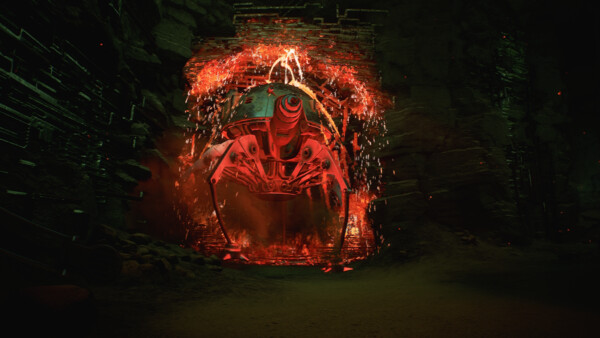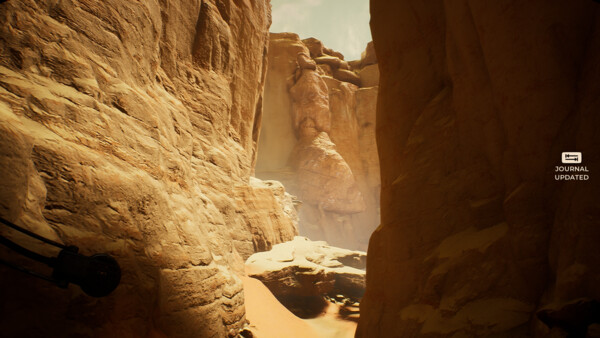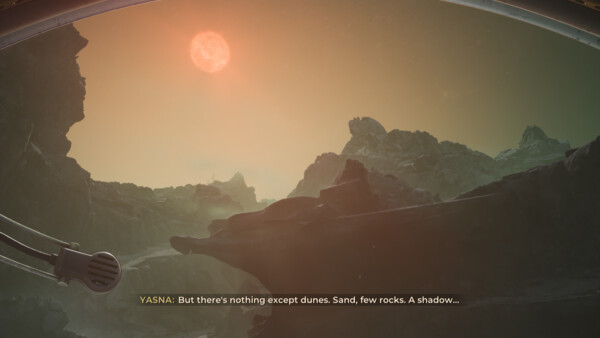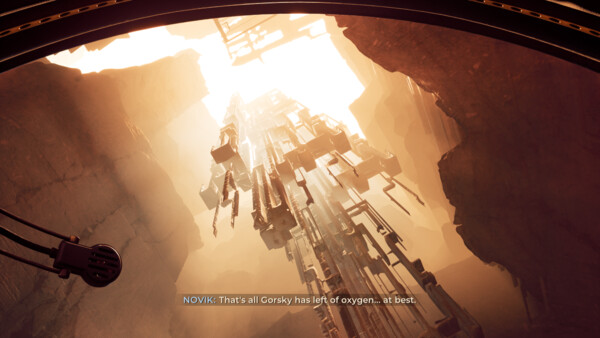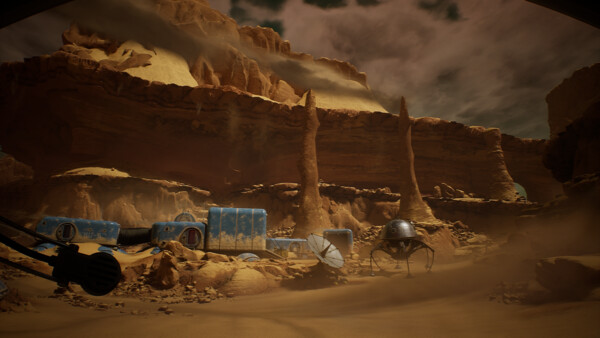The Invincible. Game review
One of the games I awaited impatiently in 2023 was The Invincible, a debut game by Polish developer Starward Industries and an adaptation of a hard sci-fi novel by Stanisław Lem, written in 1964. Stanisław Lem is one of my favourite authors, and The Invincible stands amongst his best works. I had an opportunity to play a demo version of the game back in May 2023 during Pixel Heaven and, despite some minor hiccups that could be excused in a development build, the game looked very promising. The game finally released in early November, and I just had to play it ASAP. Sadly, this blog post itself is long overdue. While I wrote a huge part of it right after finishing the game back in November, well over six months ago, I only managed to wrap it up now.
Need a hint?
The game takes place on planet Regis III. You play as Dr Yasna, a crew member of the Dragonfly, that wakes up with amnesia. You are alone and disoriented. After reading a bunch of notes-to-self, you set out towards your expedition’s camp, which you conjecture has to be nearby.
Amnesiac protagonist is one of the most abused tropes in games and is typically an attempt to make up for poor writing. That was a big red flag right at the start of the game. By the time I reached the said camp, I had a whole forest of red flags.
The Invincible is a walking simulator, Firewatch style. You walk, and you interact with objects: flip through the notes, open the doors, turn the dials, etc. With no HUD and all cutscenes being first-person, the game tries to be as immersive as possible. This is a great idea, but the execution is lacking. The player surroundings are cluttered with interaction hints, making you wonder what was the point of not having a HUD.
In particular, the game environment cannot be traversed freely. Dr Yasna can’t jump, and terrain obstacles can only be climbed in places chosen by the designers. However, traversable terrain is not distinguished visually in any way, and so all ledges that can be climbed need to be highlighted with interaction hints, significantly impacting the immersion achieved via first-person narration.
In theory, interaction hints can be disabled in the game’s settings. In practice, this results in having to randomly click on all surrounding objects, trying to figure out where is the object that the game expects you to interact with. I made a brief experiment of playing with hints at the beginning of the game, but without them the game is barely playable.
On top of the interaction hints, there are also mission hints that tell you what to do next. And what do these hints tell you? “Continue marching towards the camp”. “Keep following the road to Condor”. “Finish the conversation”. I’m sorry to say this, but if a walking simulator, or any game for that matter, needs to tell you to keep doing what you’re already doing, then something is off. In truth, these hints are completely redundant, since the game really does a good job of communicating what needs to be done. These mission hints take away what little is left of player agency, and sadly they can’t be turned off.
One final gameplay complaint is that the game severely limits your ability to run. You can sprint for a couple of seconds, and then Yasna is out of breath and needs to walk. Well, I suppose the creators really wanted this to be a walking simulator, not a running simulator.
Blessed those, who not having anything to say, do not try to put it into words
The plot of The Invincible is delivered in monologues of the main protagonist, and once she regains communication with the Dragonfly in dialogues with an astrogator. I found most of the monologues extremely tiring. Dr Yasna babbles endlessly, commenting on dozens of unimportant things. And when she runs out of things to comment, she begins to hum and sing. She just doesn’t shut up. This turned the first 30 minutes of the game into an ordeal. Luckily, the dialogues were more meaningful, and thus interesting. However, longer dialogues (of which there are quite a few) often disable the ability to interact with the environment, forcing the player to listen through the dialogue before allowing interactions with objects, and thus progress. In a similar spirit, in certain scenes the player will be either immobilized or otherwise blocked from leaving the place. This is exactly what I meant earlier when I said the player has little agency. Conversely, in a couple of places where I was actually allowed to walk during a dialogue, I reached a place that triggered a new dialogue, ending prematurely the previous one.
The plot?
But perhaps I shouldn’t be so harsh on the gameplay? After all, this is a walking simulator and these are not played for their elaborate game mechanics. Rather, the quality of a walking simulator lies in how well it tells a story. This is where The Invincible does a somewhat better job.
As already mentioned in the introduction, The Invincible is based on a novel by Stanisław Lem. The plot revolves around solving the mysteries encountered on Regis III. Firstly, why do you have an amnesia? (And luckily there is a good reason for it, so it’s not just a tool to make up for bad storytelling.) As you make it to the camp, you discover, that some of your colleagues have gone lost, while others are in a stupor. Hence, the second question: what happened to your colleagues? You will also quickly discover, that there are other humans on the planet. Unfortunately for you, they are from a hostile fraction. Luckily (?), their expedition has been decimated, just as yours. And so the last mystery: what else is on this planet?
If you read the book, then you will immediately know the answer to the last question. Thus, the unravelling of the mystery of Regis III won’t be as impactful as it will be for players unfamiliar with Lem’s novel. However, The Invincible takes some liberties in adapting the original work, and thus there are surprises waiting for the fans of Lem. I am not going to spoil them here.
Unfortunately, plot delivery isn’t perfect. I already mentioned some problems in the previous section: meaningless monologues, listening to dialogues that play out with no player agency or explicitly telling the player what to do in a form of intrusive hints. In addition to that, there are several deus ex machina moments, where the protagonist is miraculously saved from what should have been a certain death.
A long hike on Regis III
There is one thing that The Invincible does flawlessly: the world vision. The surface of Regis III is meticulously designed and visually stunning. I mean, just look:
In addition to that, all machines and vehicles are designed in a retro-futuristic style, evoking the look of science-fiction movies from half a century ago. This gives the game a unique, fresh feel. Overall, the graphics and art direction are the game’s biggest strengths.
The soundtrack also deserves praise. Though it’s not the kind of music that you are going to remember after finishing the game, it does a good job of building the mood.
Summary
I bought The Invincible on the day of its release, something that I don’t do very often. I don’t regret paying the full price, and I don’t regret the time spent with the game (around 7 hours or so), but the game wasn’t as good as I hoped for. Restrictive gameplay (excessive hints, no player agency) and annoying protagonist make for a frustrating gaming experience. If I were to rate The Invincible, I’d say it’s a 6.5 out of 10 game. I would recommend giving it a try, but perhaps wait to grab it on sale. What I can recommend without the slightest hesitation though is reading the Lem’s original novel. If you like hard sci-fi, you will enjoy it.
Also, having waited so long to publish this post, I now know that the game did not sell as well as the Starward Industries had hoped for. Sadly, this resulted in laying off 15 out of 34 employees. The developer isn’t giving up, however, and plans several big updates for the game, hoping for the long tail. I am curious what the end result is going to be, though I doubt this will fix the game biggest flaws. And let’s face it, having completed this game once, there is really no reason to play it for the second time.






